The Story of Culture and Arts
- Image resource of Korean history
- Documents from History TextBooks
- Culture & Art Stories from Korean History
- Culture & Art Stories from Korean History - Korean
- National Institute of Korean History
- History net
- About the site
- Introduce
-
Numerous topics related to Korean culture and art are mentioned in middle and high school national history textbooks, but most of them are briefly described by era, making it difficult to understand their concepts, transition processes, and characteristics.
<Culture & Art Stories from Korean History> produces and provides video materials based on expert commentary on the flow, change process, characteristics and characteristics of each major topic in the field of culture and art in Korean history.

Scenario
We might encounter these expressions in everyday conversation, in political, economic, or sports news. But did you know that these expressions all derive from the game of baduk?
Baduk, the game with a long history, referenced frequently in our daily lives. What place does baduk have in history?
Let’s take a look at the story of baduk!
Black and White Stones in Competition – Introduction and Enjoyment of Baduk
19 horizontal lines
19 vertical lines
361 intersecting points.
Black and white stones are placed one at a time on the board. It is a game where players compete to gain the largest territory!
Historically, baduk is recorded as being called “Hyeok” or “Gi.” It was also called “Wigi” or “Hyeokgi.”
However, the English word for the game is “Go,” as the Japanese version of the game influenced the West.
Baduk was brought to the Korean Peninsula from China thousands of years ago. In Korea, there are references to baduk dating back to the Three Kingdoms period.
From the Three Kingdoms period and into the Goryeo period, baduk was a popular game with the upper class. History books mention figures whose skill at the game was lauded.
Won Seonji was a man of many talents. He was very meticulous in his work and never rushed. He played the geomungo (a type of zither) with skill and excelled at baduk. - Goryeosa (History of Goryeo), “Yeoljeon” (Biographies), Won Seonji
Baduk, a game for the high and low, and beloved by scholars. Particularly in the Joseon period, baduk was considered one of the four arts and a skill that all scholars should possess. It was regarded as a symbol of high social refinement. Baduk was enjoyed by both men and women alike.
玲瓏花影覆瑤碁 / The shadows of brilliant flowers cover the baduk board.
日午松陰落子遲 / In the midday shade of a pine tree, I play a game of baduk.
溪畔白龍新賭得 / I bet a white dragon from the banks of the stream, and win it.
夕陽騎出向天池 / I ride the dragon into the sunset and race towards the pond in the sky.
- “Yuseonsa,” Nanseolheon jip (Collected Works of Heo Nanseolheon)
The game of baduk, which makes its appearance in various historical contexts, had a different appearance from the modern version we play in Korea today. In Korea, there used to be a native version of the game called “sunjang baduk.” In sunjang baduk, players first place 17 stones on the board.
“In sunjang baduk, several stones are first put on the board so territories become very split up. Lots of fighting usually erupts as a result, which is great fun. When you start with no stones pre-positioned on the board, as in the Japanese style, you begin with a clean slate. This forces you to make your move every step of the way from the very beginning, which opens room for greater variability.” Prof. Nam Chihyeong / Myeongji University, Dept. of Baduk Studies
But, sunjang baduk vanished during the Japanese Occupation, and in the 1950s, the Japanese version of the game became the main style played, mainly because of a Go master named Cho Namcheol, who had studied Go in Japan and returned to Korea.
Baduk, a game that is still played almost exactly as it was thousands of years ago. There were times when baduk was much more than just a game. Baduk has been used frequently as a method of diplomacy to foster friendship between nations.
The tradition of gifting baduk boards to build friendships goes all the way back to the Three Kingdoms period. This wooden baduk board, with its ivory inlays and exotic plant and animal decorations, was a gift to Japan from the Korean Peninsula during the Three Kingdoms period.
“In Korea, it is said that the mokhwa jadan giguk was a diplomatic gift sent to the leader of Japan at the time by King Uija of Baekje. However, the Japanese say it was an item from the Tang Dynasty. But since the board has 17 main points, it appears to be a sunjang baduk board. Recently, even in Japan, claims are being heard that there is a high possibility the board was made on the Korean Peninsula.” Kim Yeongsim, Head Curator / Seoul Baekje Museum
Baduk is also a game of strategy, where victory or defeat rests on reading one’s opponent’s moves. So it is no surprise that we can find many baduk tactics exhibited in historical battles and warfare.
“Ryu Seongryong reported, ‘Protecting rugged terrain is like putting stones on a baduk board. Only when you protect the places worth protecting will you win.’” - Seonjo sillok (Veritable Records of King Seonjo), November 2,1593 (Year 26 of King Seonjo)
361 intersecting points.
Upon which an endless battle of the minds!
They say the number of possible moves allowed in baduk is so high, the same game cannot be played twice. This level of freedom has fascinated humans for thousands of years.
“Baduk is about freedom. There are 361 intersecting points. I can do whatever I want within those 361 points. It’s only about whether that move was a good or bad one. There’s no one to tell you, “You can’t do that.” I think that’s why people like it.” Cho Hunhyeon, Baduk Master
Baduk, entering the history books once more with the match against an AI computer!
Baduk will continue to hold a special place in our hearts, since it’s not only about the joy of the contest, but gives us the wisdom to overcome any obstacle in life.
[Epilogue]
Must-Know Facts on Culture and Art in Korean History
1. Baduk used to be called gi, hyeok as well as wigi and hyeokgi.
2. In sunjang baduk, players start the game by placing 17 stones on the board.
3. Baduk, along with writing, drawing, and the geomungu, was considered one of the four arts/saye, and was a symbol of high-class refinement.
Life & Folklore
17 films-
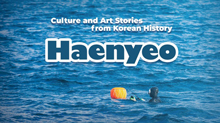 Haenyeo, female divers in Jeju08:52
Haenyeo, female divers in Jeju08:52 -
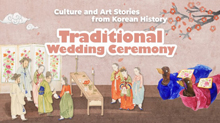 Traditional Wedding Ceremony08:22
Traditional Wedding Ceremony08:22 -
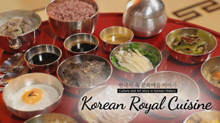 Korean Royal Cuisine08:22
Korean Royal Cuisine08:22 -
 Gat and Traditional Headwear of Korea08:48
Gat and Traditional Headwear of Korea08:48 -
 Managing Epidemics throughout Korean History08:48
Managing Epidemics throughout Korean History08:48 -
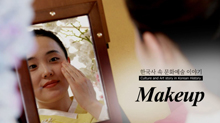 Makeup07:52
Makeup07:52 -
 Ondol, Korea's Underfloor Heating System08:40
Ondol, Korea's Underfloor Heating System08:40 -
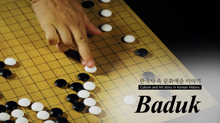 Baduk08:32
Baduk08:32 -
 Four Treasures of the Study09:34
Four Treasures of the Study09:34 -
 Farming Implements09:12
Farming Implements09:12 -
 Coming-of-Age Ceremony08:41
Coming-of-Age Ceremony08:41 -
 Ginseng08:44
Ginseng08:44 -
 Tobacco08:27
Tobacco08:27 -
 Kimchi08:37
Kimchi08:37 -
 Relief Crops08:37
Relief Crops08:37 -
 Korean Currency09:28
Korean Currency09:28 -
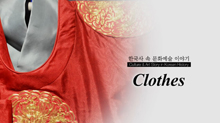 Clothes08:20
Clothes08:20

